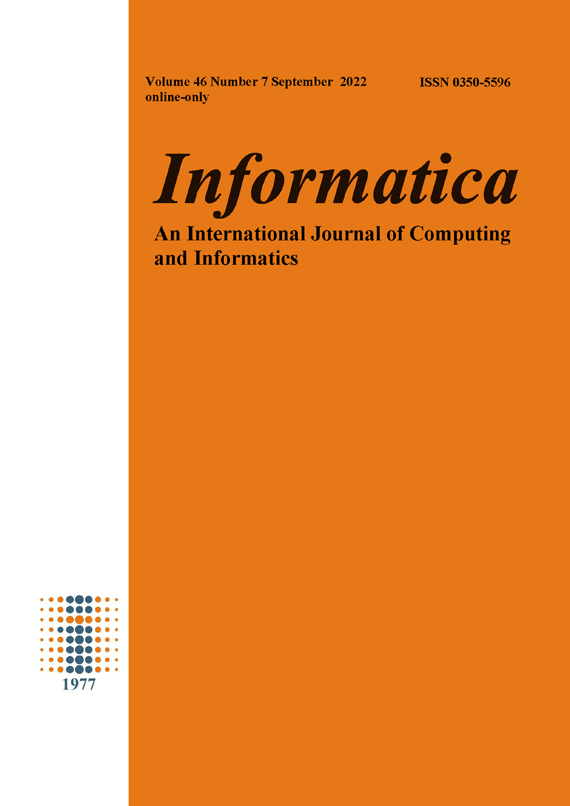Optimizing the Quality of Predicting the ill effects of Intensive Human Exposure to Social Networks using Ensemble Method
DOI:
https://doi.org/10.31449/inf.v46i7.4212Abstract
People may quickly obtain information through a variety of channels including social media, blogs, websites, and other online resources. These platforms have made it possible for information to be shared more easily. As a result, the amount of time that individuals spend on various social networking applications has increased. This research predicts the effects of human exposure to social networks in the near future. In this work a competent model for predicting the ill-effects is provided, that is both accurate and efficient. This model represents a combination of the independent models that have been operating independently so far. Thus each of these models makes a forecast and ultimate selection is decided based on whether or not there exists a majority of convergence of results from the operation of various models. By employing the majority voting system, this strategy attempts to take the benefits of the predictions produced by all the models while also to reduce the inaccuracies generated by each model. Theoretically, this model should outperform the use of individual models in terms of performance. Important features are extracted from the datasets using the proposed model, and the extracted features are then classified using an ensemble model that consists of four popular machine learning models: support vector machines (SVMs), logistic regression (logistic regression), random forest (random forest classification), and neural networks (NN). We have analyzed our prediction performance with the existing methods for number of times by changing the train set and test set data. In all the cases our novel method has been predicting with 3% to 4% improved performance in accuracy, precision, F-1 score, and specificity. From the dataset it has been achievable to attain the highest training and testing accuracy from among the existing models.References
Ali Taha, V., Pencarelli, T., Škerháková, V., Fedorko, R., & Košíková, M. (2021). The use of social media and its impact on shopping behavior of Slovak and Italian consumers during COVID-19 pandemic. Sustainability, 13(4), 1710.
Thakur, R., & Rane, D. (2021). Machine Learning and Deep Learning for Intelligent and Smart Applications. In Future Trends in 5G and 6G (pp. 95-113). CRC Press.
Manjunath, E Sreenivasa Reddy., (2021). Predicting Psychosomatic Disorders Arising from Intensive Exposure to Social Networks - Using Machine Learning Techniques. Unpublished manuscript. Acharya Nagarjuna University, Dr. YSR ANUCET.
Seebohm, P., Chaudhary, S., Boyce, M., Elkan, R., Avis, M., & Munn‐Giddings, C. (2013). The contribution of self‐help/mutual aid groups to mental well‐being. Health & social care in the community, 21(4), 391-401.
Hagg, E., Dahinten, V. S., & Currie, L. M. (2018). The emerging use of social media for health-related purposes in low and middle-income countries: A scoping review. International journal of medical informatics, 115, 92-105.
Downloads
Published
Issue
Section
License
I assign to Informatica, An International Journal of Computing and Informatics ("Journal") the copyright in the manuscript identified above and any additional material (figures, tables, illustrations, software or other information intended for publication) submitted as part of or as a supplement to the manuscript ("Paper") in all forms and media throughout the world, in all languages, for the full term of copyright, effective when and if the article is accepted for publication. This transfer includes the right to reproduce and/or to distribute the Paper to other journals or digital libraries in electronic and online forms and systems.
I understand that I retain the rights to use the pre-prints, off-prints, accepted manuscript and published journal Paper for personal use, scholarly purposes and internal institutional use.
In certain cases, I can ask for retaining the publishing rights of the Paper. The Journal can permit or deny the request for publishing rights, to which I fully agree.
I declare that the submitted Paper is original, has been written by the stated authors and has not been published elsewhere nor is currently being considered for publication by any other journal and will not be submitted for such review while under review by this Journal. The Paper contains no material that violates proprietary rights of any other person or entity. I have obtained written permission from copyright owners for any excerpts from copyrighted works that are included and have credited the sources in my article. I have informed the co-author(s) of the terms of this publishing agreement.
Copyright © Slovenian Society Informatika








